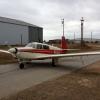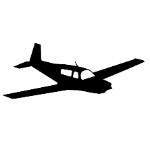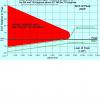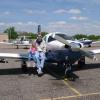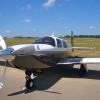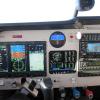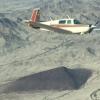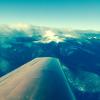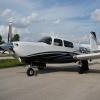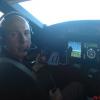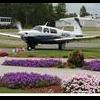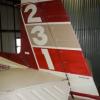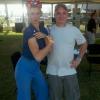Leaderboard
Popular Content
Showing content with the highest reputation on 09/14/2015 in all areas
-
From: http://www.avmed.in/2011/10/cabin-pressurisation-–-hazards-of-rapid-decompression/ "The physiological effect of decompression depends upon the pressure differential, the duration of decompression and the final cabin altitude. The most severe hazards associated with a rapid decompression to high altitude ishypoxia. This hazard is particularly significant for the following three reasons. a. In the case of high differential cabins with a cruising cabin altitude of 1,500 m – 2000 m (6000 to 8,000 ft), the crew is most unlikely to use oxygen equipment at the time of the decompression. b. If the final cabin altitude is very high i.e. above 10,000 m (33,000 ft), the time of useful consciousness (TUC) for various crew members breathing air may be reduced by as much as one third from the figures which would normally be expected for that ambient altitude. This is due to the fact that during the escape of gas from the lungs, the partial pressure of oxygen in the alveoli is reduced to below 40 mm Hg which is the approximate value for the oxygen tension in the venous blood. There is an actual reversal of the oxygen diffusion gradient across the alveolar membranes and oxygen passes back into the lungs from the venous blood. Immediately following a rapid decompression to these very high altitudes, therefore, the arterial blood leaving the heart would be carrying a little or no oxygen and the onset of hypoxia would be very rapid. This shows the advantage of having the pilot or one of the pilots on oxygen the whole time when ambient aircraft altitude exceeds 8.5 Km (30,000 feet)."4 points
-
3 points
-
Comparing breath holding to altitude-related hypoxia is apples to oranges. In a breath hold, the discomfort, anxiety, and urge to gasp mainly comes from sensing increased blood CO2 (hypercapnia) and the resulting acidosis, not decreasing O2 availability to tissues (hypoxia), which drops pretty slowly at first and does not immediately alter blood pH (until lactic acidosis occurs- but that's another topic). Hypercapnia is not a problem when becoming hypoxic during climb to altitude because you are breathing just fine, which gets rid of the CO2. In fact the exact opposite tends to occur - i.e. hyperventilation in response to hypoxia causes hypocapnia thus alkalosis (which contributes to "altitude sickness" in some folks). In general, the experience of hypoxia is more insidious than hypercapnia because we are more strongly wired to regulate our breathing rate and depth based on blood CO2 levels- this makes sense because CO2 directly impacts blood pH, which must be maintained in a fairly narrow range to support the chemistry of our metabolism. Different tissues can tolerate prolonged hypoxia pretty well, albeit to varying degrees - the brain is the worst given its very high energy demand and minimal capacity for anaerobic metabolism. As far as immediate loss of consciousness during decompression at extreme altitudes that Mooneys are incapable of, Deb's post above is on point. This is another animal.3 points
-
We are working at getting the chamber ride at Tindall for next year's Mooney Summit with the USAF. We tried to get it this year, but it was unavailable for the dates we needed it. Additionally, the FAA has a portable Oxygen depreviation "ride" and a spatial disorientation ride we are trying to secure for next year, budget permitting.3 points
-
You mean this one? I think it owns me though. [emoji6] Sent from my iPhone using Tapatalk3 points
-
Matt thats an awesome idea to try and put together a altitude chamber for our group, also it would be great if out MAPA safety foundation could arrange for a few around the USA. i just returned from the safety course from AC and if I would have thought of it I'd have spoken with the directors explaining the need and request for them to do this. i plan on e- mailing Ted, Jack Ralph and Dr P. Today with that awesome idea and request. this is a situation regarding another thread about when ,where and what to say about the loss of one of our comrades ..a great idea emerged..if we sat back and merely critized Mike that's wrong by using his loss for future safety learning experiences turns the tragedy into a forum of ideas may he rest in peace..and Godspeed to all my fellow mooniacs and other GA drivers Dan3 points
-
Yes, I am on the Savvy team doing analysis for Maintenance and AnalysisPro clients.2 points
-
It's the Aero Mods inc 1 piece belly that has the stakes down each side. I put one of these on a few years ago and the instructions said to remove some of the original panel support crosspieces as well as the riveted on section of skin under the seat area. In talking to the owner of Aero Mods he told me that he ran a flight school out in Co and got tired of repairing the belly skins, so he developed the one piece and put the stakes on it. He said they would just slide to a stop and the stake would be about 1/4" shorter than before and it usually saved the flap hinges. I also have a complete set of undamaged belly skins if any should have a need for them.2 points
-
So incredibly sad. By all appearance our fellow mooney space brother had the skill and the equipment to fly in the flight levels and IFR. I don't want to diminish his or anyone else's ability but say this from the perspective of a guy that flys for a living. I wouldn't do what some of you guys do with a whole lot less experience. Just because you can doesn't mean you should. Your risks go way up when things go wrong. In this case Michael was in thin air, weather, single pilot, one motor, time pressures and probably oxygen issues. Even for Chuck Yeager that's a lot!! It's so seductive to have these planes with all the incredible capabilities. It's very seductive to catch a nice tailwind and get above weather up high but not without risk. Let this tragedy serve as a reminder that we all need to get honest about the exponential risks of flying high, near mountains, in ice, at night or low IFR. Sent from my iPhone using Tapatalk2 points
-
2 points
-
I have been a savvy maintanance client in the past and been using 15W50 before I was even a client. Their advice "...if you don't want to use something like camguard I recommend using an oil that has corrosion inhibitor pre-blended in it..." In fact the engine has been running 15W50 before I purchased the airplane and it was maintained under Ronnie Kramer's watch and Dugosh since birth. Aeroshell 15W50 has done a superlative job in my engine all these years. When something works so well for so long I trust it and stick with it!2 points
-
Yeah, but you don't want to drop a wrench and bend over when they're in the hangar.1 point
-
Did you get hailed on? "Naw, it was just my hot girlfriend in stiletto heels dancing on my wings"1 point
-
Thank you to all who took action on this! In case you missed it, AOPA just sent out the following note: "As you may know, your Senator Ted Cruz is now a cosponsor of the Pilot’s Bill of Rights 2! If you are among the tens of thousands of AOPA members who contacted their elected officials and asked them to support PBR2, thank you! Your action has made a tangible difference in the fight for third-class medical reform and protections for general aviation pilots." It's about friggin' time! Cnoe1 point
-
5 characters? All the ones I can think of have 4. Give us a hint!!! Shad-Nothing comparable to someone that knows what they are looking at take a look. If that's not you, tell the potential buyer. I know I wouldn't know what exactly to look at. It would be tough to say it was good and then have them find something expensive or for somebody to get hurt in an airplane that was repaired improperly and finally gave up the ghost 11 years later.1 point
-
1 point
-
Sunday saw the rare combination of clear skies, smooth air and free time! I have not had much time to fly this year and barely have keep currency. I set off of KPLR with not much plan except to do some flying. The air was as clear as I have ever seen in Alabama, unlimited visibility and bright, golden sunshine. After breaking off a RNAV 3 approach practice at the home drone, due to too much traffic, I punched KGAD in the Garmin and loaded the RNAV 36 approach and hand flew it. Taking off, I headed east to KPYP, a country field near the GA boarder. The sunshine and clear air called me north to Ft. Payne, then over to Scottsboro then finally to Guntersville, where I landed at the new 3300 ft runway. The farms and low hills of Eastern Alabama make for some beautiful sightseeing. After flying home to KPLR, I landed, cleaned the windscreen, fueled up and did several night approaches and landings. I imagined how jealous the folks on the boats below must have been to see me have total freedom. 3 hours total, three approaches, over 10 landings and 4 new airports, never used the A/P. Late Sept and October is hard to beat for flying in Alabama. I may start a plan to check off all the Alabama airports. Pictures attached.1 point
-
1 point
-
Ok, signatures are back on and you can set them in Account Settings - there is now a tab there for "Signature"1 point
-
1 point
-
1 point
-
It's not interesting at all. It was overhauled by Triad in Erwin, NC. All core engine parts were refurbished by R Roman. Case went to Divco. Fuel system was ovehauled from servo to flow divider. Mags and fuel pump exchanged. This is a relatively low time bird. What is interesting is that the cam has survived 37 years with <3000hrs. Maybe it was flown weekly for at least an hour. Maybe he ran cam guard in it before camguard was invented. Maybe he had an engine dryer and silica spark plug inserts...but my bet is that in the 70s, Lycoming had their production lines cranking and their QC in order. In the following decades, I think they made several batches of $hit cams.1 point
-
I think it's highly probable that if one goes unconscious due to lack of oxygen it becomes more then a little nap till a lower altitude. I would think the brain shuts down and there's no coming back and that happens fairly quickly. When we practice high-dives from FL430, (simulating loss of pressurization) if the oxygen masks don't deploy or activate by pulling the mask to your face, people will die. That's why in the safety briefings they say put your own mask on before helping others. At those altitudes useful consciousness is about 5 seconds. Even diving at Mach snot takes several minutes to get to thick air. Sent from my iPhone using Tapatalk1 point
-
Obvious solution for plan B: Start training the back up pilot in the Hincapie biking outfit. best regards, -a-1 point
-
i used to think I was 'passionate' about my engine... Turbo owners are truely passionate! in the engine manufacturer wars, All three are equally challenged. All three have had difficulty rolling out their first engine. The P variety never got to their Bravo model. lycoming needs another update made available for the Long Body. A ) getting it up to 310hp would be really cool. B ) being able to run LOP keeps Mooney owners happy. for the Mid Length guys A) corrosion kills the Lyc. cam, then nearly requires an OH to swap the cam out... For the short body guys... A) lycoming needs a solution for stuck valves in their O360. Talk about serious valve issue. if I were the OP, I would still strongly consider the Acclaim with a real PPI and some how include Erik's experience while checking the engine... Keep up the passion! now back to the NA LOP channel, -a-1 point
-
I pulled both the GTN 750 Com and Nav CBs, and the Remote Audio CBs, and the 750 stayed on with Xs for the frequency boxes, and Xs where the audio panel allows frequency selection. The Transponder box stayed lit, and allowed me to change codes. If I pulled the Transponder CB I got Xs in that box. I don't know how to kill the GTN 750 itself with switches or CBs. Perhaps it is wired strangely, but the installation was made by a first class shop specializing in jets and turboprops. I can kill the GTN 750 by pulling it out of the tray, but I really don't want to do that until I am with an avionics tech. Too easy to bend a pin in the fittings.1 point
-
You may have predicted it but I think Carl actually invited B26's eyeball pain.1 point
-
We all love our Mooney's. Some just feel the need to justify their decision...I mean love more than others. I enjoy every mine is better "because" second of it. I personally could not afford an F at the time of my purchase. My penalty is going faster. I try not to cry myself to sleep at night.1 point
-
My F should be ready for pick op at advanced aircraft at Troutdale OR Tuesday $8,500 for 64 gallon tanks. Ron1 point
-
Good luck. Don't wait to long too long to enact plan A. As usual have plan B ready to deploy as well. -a-1 point
-
110 stones? Looks like a job for you F guys with big back seats and useless load.1 point
-
Joe, There are many threads here on MS about rigging. Do a little searching and read up on the subject. Also, I would suggest to not get too deep into rigging until you talk to a qualified Mooney specific mechanic and one that has the Mooney travel boards to measure the position and movement of your control surfaces. The first thing to do is to get the rudder rigged, first on the ground and then in the air. Level the airplane left and right using the seat rails as your level surfaces. Level front to back is not so important in this first step. Once laterally level, check to see if the ball is centered in your turn coordinator. if so, then your instrument is ok. Next, fly the airplane to determine which direction the rudder needs to go to get the ball centered in flight. If you feel brave, you can flex the trailing edge of the rudder in the opposite direction needed to begin to try to get the ball centered. In other words, if the ball is out to the right so that you need right rudder, then flex the trailing edge of the rudder to the left. When I say flex, I mean flex. Some might say bend but if you bend the metal you will have made and HUGE adjustment. Also remember that any of these adjustments are very subtle. It does not take much adjusting to make a big difference in flight!! I know that you asked specifically about your ailerons and that they appear offset, but the part that must be corrected first is rudder. That is where the rigging process starts. Again, I wouldn't do much adjusting - or any - until you have talked to good Mooney specific mechanic that actually looks at your airplane and makes a recommendation, and also until you have some sort of feel about how subtle these adjustments really are - perhaps by observation. Dave1 point
-
thank you.were just waiting it out. The power is still on and that's a good sign since I work for the power co and know where the sub is and how the circuit runs. Still no wind but also no progress on the fire. They say it's too smokey for air attack perhaps the helicopter guys are getting in. Fingers crossed.1 point
-
and now it is in good hands too, empty weight ?? oh no, not the fat girls again1 point
-
I also have a KAP150. When I said I dial in 1500fpm, I didn't mean that I have an actual VSI preset. I've experimented with this, and know that if I hit ALT (disabling ALT hold) and then hit the AP trim down button and hold for a count of one thousand one, I'm in the ballpark. I just need to know that I've started down to breathable air, and need the simplest, most immediate, CERTAIN way to ensure this. This is the best I've been able to come with, given my equipment ('87 TSE with KAP 150). I'm not worried about what will happen below 10k. Unless I'm over high terrain, and that would require me to rethink my protocol before I fly those types of routes. I'll be in breathable air and back to my senses before I get to 10k. I know that because I've experienced it.1 point
-
Not just lapping the valves, it is important to get the valve geometry right, so the rocker "rocks" across the top of the valve stem, not slides and pushes laterally on it. Few shops take this extra step.1 point
-
Being a retired military pilot, I lost track of how many alt chamber rides I've done. If I had to guess, I'd say between 8 and 12. The one thing everyone needs to understand, is that everyone is different in their ability to function at altitude. For me at 25k, I've got about a minute or less to recognize hypoxia, and get on backup O2. Probably less now that I'm older. I remember one guy from Colorado Springs (6200ft) that went almost 5 minutes. The safety guy in the chamber finally told him that was long enough, and to put his mask back on. He was able to comply!!! I'm sure there are Sherpas from Kathmandu that could go a very long time at 25k. There were other pilots in the chamber, that became euphoric, requiring the safety guy to put their masks back on for them. The most important thing is to recognize hypoxia, and get on backup O2 first. Do not waste time trying to trouble shoot your malfunctioning system, or start your descent. If I had a one button emergency descent system as part of my autopilot, I'd probably push it as I was reaching for my bottle. You must have a backup bottle, that's fully charged, within arms reach, that you function tested prior to your flight. Once safely on your backup O2, start your descent and declare an emergency! It behoves everyone flying in the flight levels, to do at least one alt chamber ride. You'll never know how you're going to react till you do. Bob Everything above is my opinion.1 point
-
The seals are very good at what they do, but they will get hard overtime( like any other Orings). The blade Orings are somewhat exposed to the elements being the snapring does not keep moisture, grit out. Some props hold greese for 20yrs, some will leak in 10yrs. Your prop is a 6yr 2000hr prop. If a Hub has had corrosion worked out of the blade sockets, the Oring will sometimes have a hard time sealing properly due to the increased size of the blade socket. On certain models propellers we are allowed to cut the blade socket an install a strip of .010 Teflon in the hub: Good by greese/oil leaks. The Blade Orings have a much longer life mated to Teflon, as opposed to riding on Shotpeened Aluminum My 2 cents1 point
-
I use 3 100W bulbs, two on pigtails and one in a ceramic ceiling fixture.. wired with zipcord to a single A/C plug into a timer. 2 pigtails go under the pan thru the oil check hole and the ceramic fixture goes under the radios (on hump between pilot and copilot). I set timer to come on at midnite and off at 10 am. Set it up the day before and If I elect not to go the lights go off at 10. Cover the cowl with a pair of blankets. Works great for me here in NC. Bill1 point
-
Here's the whole quote, it's 20 years old if that's an indication...from 1995. Id say we've come a long way in 20 years. We know much more about oils, corrosion, and how to operate and care for engines Dogma and preconceived notions remain the same Source : http://www.avweb.com/news/maint/182909-1.html For the most part, it achieves these goals. Aeroshell 15W-50 is an excellent oil which does almost everything well. However, like all multi-weight oils, it remains quite thin at room temperatures, and so strips off engine parts readily and leaves them vulnerable to corrosion during periods of disuse. About a year ago, Shell started adding a new corrosion inhibitor to the additive package of Aeroshell 15W-50 in an attempt to remedy this problem. However, wefeel that it's too early to tell just how effective this new additive is. that new additive is acidic and eats copper flash off of steel parts.1 point
-
Okay, so here's mine: 1.) I hope to God nobody died with me. 2.) Please know that I died doing something I truly loved doing, and I am grateful for that. 3.) If I died as the result of something that was not my fault, I hereby give authorization to speculate all you want, as long as you learn from what happened to me. You also have my permission to question my judgement all you want, so long as you learn from me. And please set the record straight when the facts come out. 4.) If I died as the result of my own stupidity, you have my permission to rake me over the coals and call me out for what I did, as long as you learned from what I did wrong.1 point
-
Today's flight is actually yesterday and today. My wife and I took to the sky to get away for a couple days we left for E45 Pine Mountain up in the gold country and stayed at the old Groveland Hotel. There was another fire burning to the east and being pushed away but just before we left another broke out to the N/W of our destination filling the area with heavy smoke. As usual Nor Cal approach was great and helped us locate the small field which only became visible at 6 miles form 5500 AGL. Today the smoke was very thick and some might say too thick for a VFR departure we engaged the AP and contacted departure for flight following and were cleared to 8500 and for a good bit of the climb we were close to blind and advised ATC of the conditions. When we reached 8500 there was better visibility but we were still in the heavy haze until half way accrss the Sacramento valley. Trimmed out auto pilot working and smooth air I spent most of the time thinking of our Lost fellow Mooney pilot which made for a somber flight. My wife slept almost the whole trip. Looking back to the flight listening to all the comm with ATC my thought was I am very blessed to be part of an incredible group of people that reach for the sky and do something most people can't even emagine doing. Once again my prayers go out to those left behind. Photos from yesterday's arrival today's departure was way worse. I'm sick of these damn fires.1 point
-
1 point
-
Should I go in a plane crash, I would hope all are respectful. As for speculation and/or suspicions on my lack of judgement, its the only way others learn. I don't have a problem with it. On a personal note, I try to avoid the speculation on others judgement, mostly because I am not 100% perfect1 point
-
1 point
-
Watsonville was having a fly in today so we decided to check it out. Had a nice flight when we were getting close Nor cal was having a hard time hearing our transmissions we could hear them and all the previous controllers could hear us fine. Any way they were nice enough to call the temporary tower and advise them of our arrival when we were just outside of the delta there was so much traffic we had to orbit for over 15 minutes before we could get in. Once we got in had a long hold for a B25 that was on the taxi way in front of us. There was quite a big turn out. Met a nice young man that was getting ready to depart in an F or G his name was Ryan and he said he just got his plane 3 weeks ago. I asked if he was on Mooney space he said he was not but was going to join our band of misfits I let him know it's a great source for good fun and fantastic information.1 point
-
I bet this is the smallest tip of the iceberg - and those that post are even more rare.1 point
-
I know exactly what my Mooney looked like when original. She was the cover-girl for the Jan. 1990 AOPA Magazine. She was the first Advanced Trainer model that was built in late 1989. The Advanced Trainer paint design attracted me immediately and I bought that very airplane in 2005. Recently I had the airplane repainted and eliminated the graphics and changed the off-white color for snow-white to increase the visibility. The numbers were N900AT but that number was so slow to say that I reserved a number one digit shorter to enhance the stripes, and made sure each number and letter was just one syllable long. This was the result.1 point
-
1 point
-
As Scott said, I have a 1987 Mooney M20K. I converted it to an Encore last year. The performance provided by the conversion makes it legal for me to carry a 1050lb useful load. (The Encore adds 230lbs of capacity). Some TAS numbers I've experienced while slightly lean of peak: 14,000 - 173 KTAS, 10.9 GPH 16,000 - 183 KTAS 11.9 GPH 17,000 - 190 KTAS 11.9-12 GPH 19,000 - 188 KTAS 11.8 GPH All these performance numbers are Lean of Peak. It's hard to keep the engine cool at high power settings unless you are LOP, or have the cowl flaps open to a less-than-desirable degree. I am absolutely impressed with my airplane and can't see flying anything else at the moment. Another note, if you typically fly down below 9000' or so, your performance will be about the same as a Mooney M20J. I owned an M20J before my current ship and it's a better plane for poking holes in the sky. But my plane is used for cross country flying 80% of the time, or more. I want to be able to quickly climb above the summer convective buildups to where the air is cool and smooth. The turbocharger helps. And there's nothing like busting 240 knots eastbound with a kickin' tailwind...1 point








